Hydrangea Spacing for Optimal Development: Border Beauties
Hydrangeas are beloved plants in gardens, cherished for their stunning blooms and low-maintenance nature. However, achieving their optimal development and overall health hinges on proper spacing. We’ll explore the significance of correctly spacing your hydrangeas and the factors to consider before planting them.
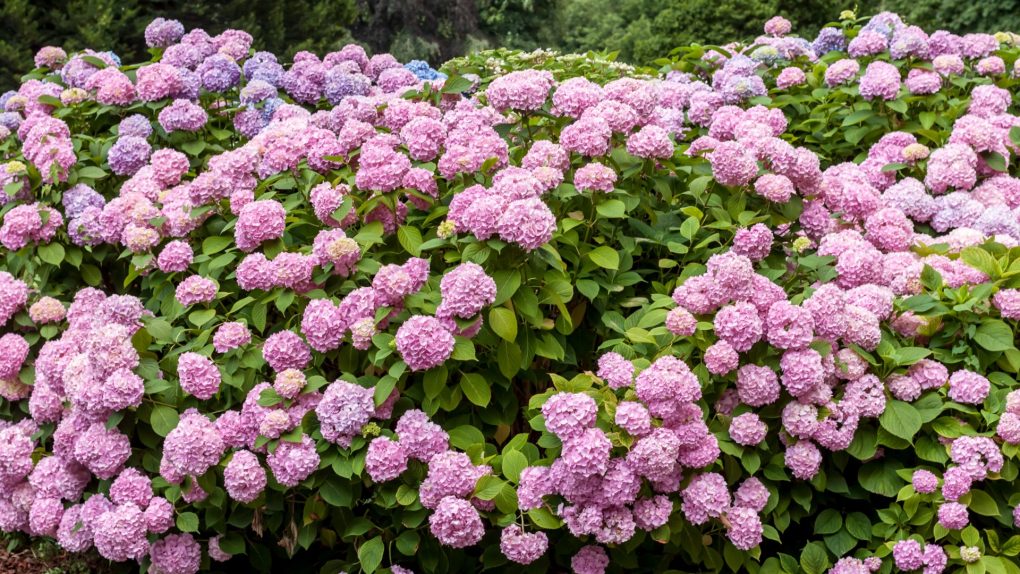
Importance of Proper Spacing for Hydrangeas
A successful garden relies on numerous factors, and proper plant spacing is among the key considerations. This principle holds for hydrangeas, as their optimal growth and development necessitate adequate spacing.
Overcrowding can result in stunted growth and increased disease susceptibility due to resource competition. Moreover, providing ample space between hydrangeas facilitates proper air circulation, minimizing the risk of fungal infections.
Each hydrangea variety has distinct spacing requirements, and selecting the appropriate distance between plants ensures individual plant health and enhances the overall visual allure of your garden or landscape design.
Table of Contents
Factors to Consider When Spacing Hydrangeas
Proper spacing is crucial for the growth and development of hydrangeas. Consider the following factors to ensure your hydrangeas have enough room to flourish:
1. Mature Size of Hydrangeas
Hydrangea varieties vary in size, so it’s important to research the mature size of the specific variety you are planting. Different hydrangeas require different amounts of space to thrive. Planting them too closely together can result in resource competition, stunted growth, and increased vulnerability to disease. So give your hydrangeas enough space to reach their full potential and create a beautiful border.
2. Purpose of Planting Hydrangeas
Consider your purpose for planting hydrangeas. To create a fuller border, closer spacing may be necessary. However, if you prefer individual plant growth, provide more space between each hydrangea.
Proper spacing is crucial for optimal growth and development regardless of your intention. It promotes air circulation and reduces disease risk, allowing your hydrangeas to thrive.
3. Growth Pattern of Hydrangeas
Hydrangeas have different growth patterns, such as round, mounded, and upright forms. Understand the growth pattern of your hydrangea variety when planning their spacing. Some hydrangeas can reach heights and widths up to 6 feet, while others remain more compact. Consider the mature size of each hydrangea and allocate sufficient space accordingly. Avoid overcrowding, as it can lead to limited resources, stunted growth, and increased susceptibility to disease. Proper spacing enables optimal air circulation and healthy development of your hydrangeas.
Remember, providing the right amount of space for your hydrangeas will contribute to their overall health and aesthetic appeal in your garden or landscape.
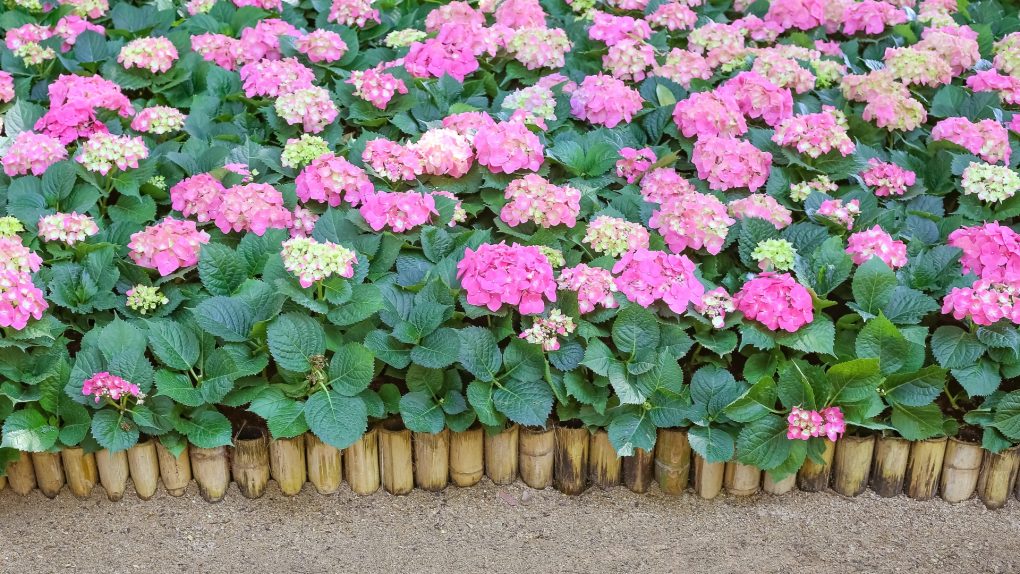
Spacing Guidelines for Hydrangeas Based on Variety
When it comes to spacing hydrangeas, it’s important to consider the variety’s mature size before planting. Adequate spacing allows optimal growth, flowering, and proper air circulation to prevent disease. Here are the spacing guidelines for different hydrangea varieties:
Macrophylla Hydrangeas
● Spacing: Plant macrophylla hydrangeas 3-4 feet apart to allow for their mature size.
● Care Tips: Ensure well-draining soil, ample water, and sunlight for healthy growth.
● Pruning: Prune in late winter or early spring to promote new growth and optimal blooming.
Proper spacing ensures healthy growth and creates a beautiful border or hedge for your garden.
Paniculata Hydrangeas
● Spacing: Space paniculata hydrangeas at least 6-8 feet apart to ensure adequate air circulation and promote healthy development.
● Pruning: Regular pruning helps maintain their size and shape while encouraging new growth and optimal blooming.
Paniculata hydrangeas can grow up to 15 feet tall and wide, making them a striking addition to any garden or landscape.
Arborescens Hydrangeas
● Spacing: Provide a minimum of 5 feet spacing between arborescens hydrangeas to ensure optimal growth and development.
● Care Tips: Adequate spacing allows good air circulation and reduces disease risk.
● ‘Annabelle’ Variety: This popular arborescens hydrangea can grow up to 6 feet wide.
With proper care and spacing, arborescens hydrangeas, including the ‘Annabelle’ variety, can thrive in any garden setting.
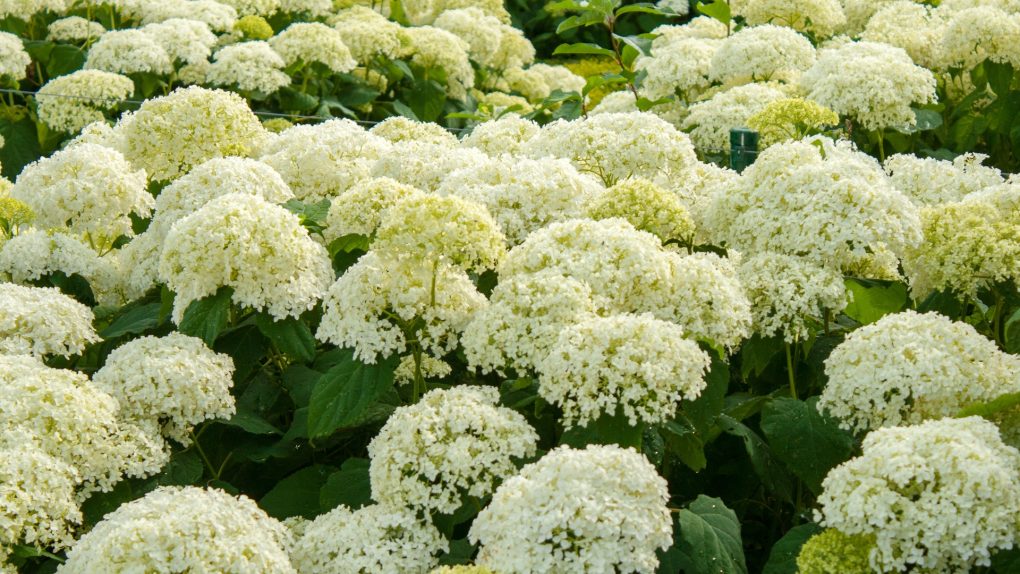
Quercifolia Hydrangeas
● Spacing: Plant quercifolia hydrangeas at least 4-6 feet apart to ensure adequate airflow, sunlight, and nutrients.
● Care Tips: Proper spacing reduces the risk of disease and pest infestations.
● Ideal Conditions: Quercifolia hydrangeas thrive in well-drained soil, partial shade, and add texture and color to any garden.
Proper spacing and care are crucial for optimal growth and development of quercifolia hydrangeas.
Anomala Hydrangeas
● Spacing: Plant anomala hydrangeas near a support structure like a trellis or fence for vertical growth.
● Air Circulation: Ensure proper spacing to allow good air circulation and prevent disease.
● Importance of Spacing: Overcrowding due to improper spacing can lead to reduced growth or even plant death.
How Close is Too Close?
Proper spacing is crucial for the optimal growth and development of hydrangeas. Overcrowding can lead to resource competition, stunted growth, and disease susceptibility. Follow the recommended spacing guidelines for each variety of hydrangea to ensure a healthy display.
Risks of Planting Hydrangeas Too Close Together
Planting hydrangeas too close together can lead to various problems. Overcrowding results in competition for resources like water, nutrients, and sunlight, negatively impacting growth and health. It also increases the risk of disease or pests due to poor air circulation. Ensure proper spacing to provide each plant with the necessary resources to thrive.
Recommended Spacing for Multiple Hydrangea Plants
Consider the mature size of each hydrangea cultivar when spacing multiple plants. Smaller varieties like the Cityline series require a spacing of 2-3 feet, while larger varieties like Limelight or Annabelle need at least 5-6 feet to prevent overcrowding. Proper spacing promotes air circulation, prevents fungal diseases, and supports healthy growth.
● Smaller varieties (e.g., Cityline series): 2-3 feet spacing.
● Larger varieties (e.g., Limelight, Annabelle): 5-6 feet spacing.
How Far Apart Should Hydrangeas Be Planted from Other Plants?
When planting hydrangeas near other plants, consider their mature size and space them 3-5 feet apart. This spacing allows optimal growth without overcrowding or competition for sunlight and water. Planting hydrangeas in groups of odd numbers creates visually appealing garden designs and ensures each plant has enough room to flourish.
Companion Planting for Hydrangeas
When planting hydrangeas, choose companion plants with similar soil, light, and moisture requirements. Hostas, ferns, and astilbes are excellent options. Companion plants provide shade and attract beneficial insects, enhancing the health of hydrangeas. Consider the mature size of both hydrangeas and their companions when spacing them for optimal air circulation and sunlight exposure.
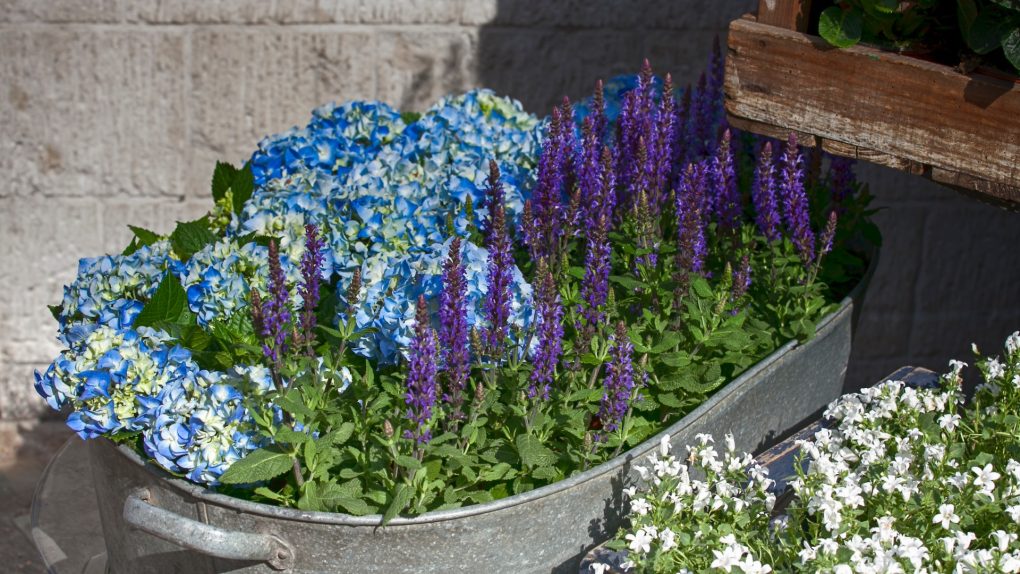
Recommended Spacing for Planting Near Trees
Plant hydrangeas near trees with a spacing of at least 3-4 feet for adequate air circulation and root development. Adjust spacing based on the tree size: smaller trees may require 5-6 feet, while larger ones need 8-10 feet or more. Adequate spacing ensures sufficient sunlight, water, and nutrients for hydrangeas and trees to thrive, creating a healthy garden ecosystem.
Best Practices for Planting Hydrangeas
To ensure successful growth, follow these best practices when planting hydrangeas:
Preparing the Soil for Planting
Prepare the soil for optimal growth by testing its pH level and adjusting it if necessary. Use rich, well-draining soil by adding compost or organic matter to improve structure and nutrient content. Proper soil preparation provides a solid foundation for your hydrangea plants’ growth.
Ideal Planting Time for Hydrangeas
Plant hydrangeas in spring or fall for optimal growing conditions. Cooler temperatures during these seasons allow the plants to establish strong roots before extreme weather. Late summer or early fall planting promotes root growth instead of foliage production, helping hydrangeas prepare for winter.
Proper Watering Techniques
Maintain proper watering techniques for healthy growth. Water deeply at least once a week, ensuring moisture reaches a depth of 6-8 inches. Use a soaker hose or drip irrigation system for consistent moisture and deeper water penetration. Avoid wetting leaves and flowers to prevent diseases and fungal growth. Mulch around the base of the plant to retain moisture.
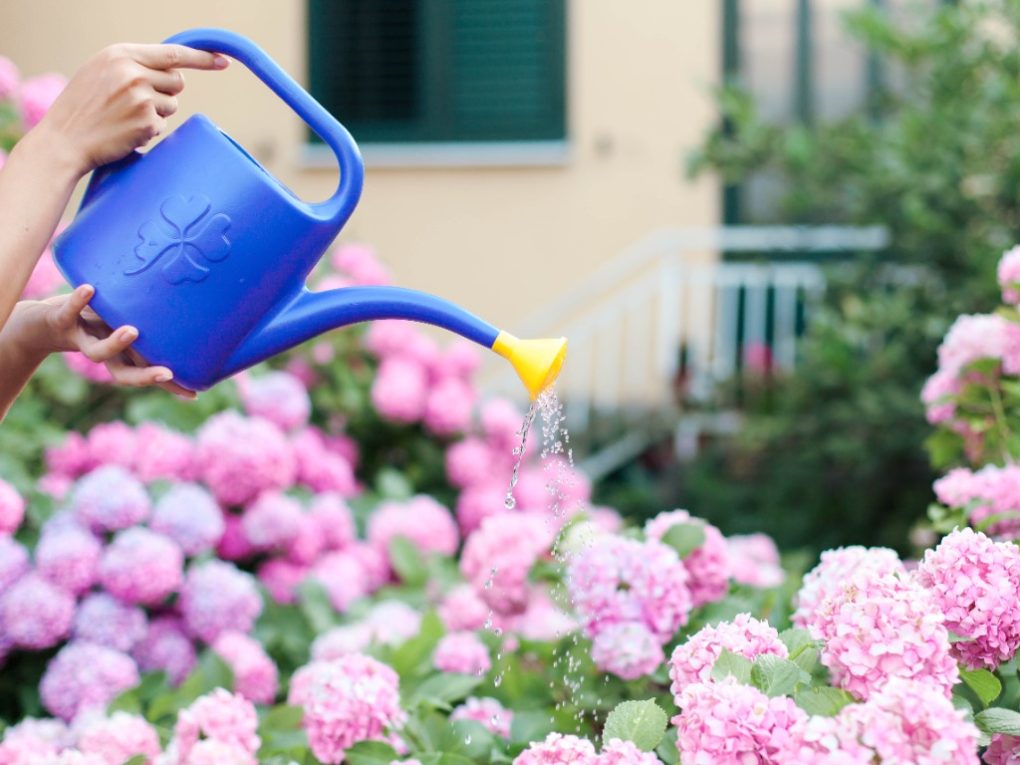
Fertilizer Application for Optimal Growth
Apply a balanced fertilizer with equal amounts of nitrogen, phosphorus, and potassium in spring before new growth appears. Follow the instructions on the packaging and water thoroughly after application. Avoid over-fertilizing to prevent damage. Proper fertilization enhances the growth and health of hydrangeas.
Conclusion
Proper spacing, soil preparation, ideal planting time, watering techniques, and fertilizer application are essential for successful hydrangea planting. Consider the mature size of your hydrangeas and their companions, and follow best practices to ensure optimal growth and blooming. Your hydrangeas will thrive in any garden with the right care and attention.
